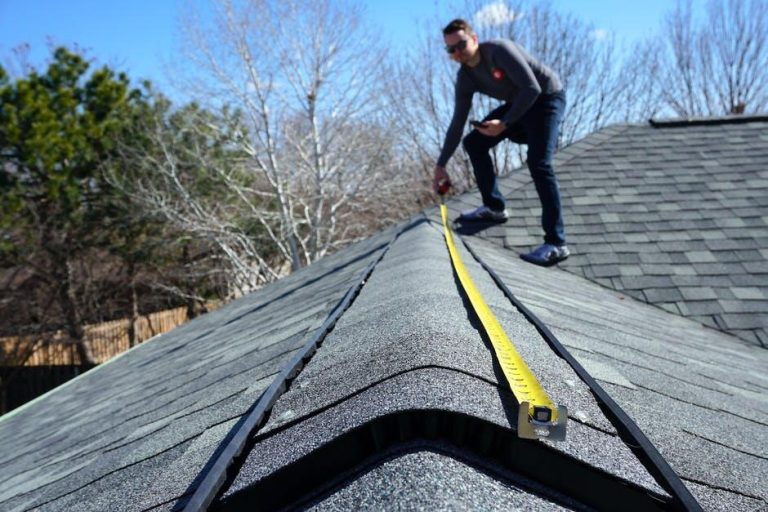Have you ever wondered how long your roof will last? A roof is one of the most important parts of a home, but it’s often forgotten until something goes wrong. Taking care of your roof can prevent expensive repairs and help your home look great for many years.
Regular maintenance not only protects your home from the weather but also helps it keep its value. In this article, you’ll learn simple and effective ways to take care of your roof and keep it in top shape for the long haul.
Inspect Your Roof Regularly
Inspecting your roof a few times a year can help catch small problems before they become big ones. Walk around your home and look for missing or broken shingles, sagging spots, or signs of water damage. Use binoculars if you can’t see the roof up close. It’s also smart to check after storms, strong winds, or heavy snowfall.
Early signs of wear and tear, such as small cracks or loose nails, should not be ignored. Pay close attention to flashing around chimneys or vents, as these areas often leak first. If you’re unsure about anything you see, it’s always okay to ask a roofing expert for help. Keeping an eye on your roof means you can fix problems early and avoid more serious issues later.
Clean Gutters and Downspouts
Gutters help guide rainwater away from your roof and home. When they’re blocked by leaves, sticks, or other debris, water can back up and damage your roof. Clean your gutters and downspouts at least twice a year, once in the spring and once in the fall. Use gloves and a small shovel or scoop to remove debris, then flush them out with a garden hose.
Make sure water flows freely through the downspouts. Blocked gutters can cause water to pool on your roof, leading to rot, mold, or even leaks inside your house. Keeping them clean also helps your home look neat and well cared for.
If your home has trees nearby, you may need to clean the gutters more often. This simple chore goes a long way toward keeping your roof strong and your home dry.
Trim Overhanging Tree Branches
Trees provide shade and beauty, but overhanging branches can damage your roof. In strong winds or storms, branches may break and fall on your roof, causing cracks or broken shingles. Even without breaking, they can scrape the surface over time and wear it down.
Leaves from overhanging branches also tend to collect in gutters, which can cause clogs and water buildup. Trimming tree branches regularly keeps your roof safe and lets more sunlight reach it, which can help dry out moisture after rain. This reduces the chance of moss or algae growing.
It’s a good idea to keep a clear space of several feet between trees and your roof. While trimming, always follow safety rules or hire professionals who are trained to handle such tasks safely and properly. Keeping trees in check helps your roof stay clean, strong, and looking good.
Prevent and Remove Moss and Algae
Moss and algae can grow on roofs, especially in shady or damp areas. These growths may seem harmless at first, but they hold moisture, which can slowly break down roof materials. Moss, in particular, can lift shingles and let water seep underneath.
To prevent this, keep your roof dry by trimming nearby trees and cleaning your roof as needed. If you see moss or algae forming, gently remove it with a soft brush and a cleaning solution made for roofs. Avoid using high-pressure washers, which can damage shingles.
You can also install zinc or copper strips along the roof ridge to stop moss from growing. These metals release small amounts of chemicals when it rains, which help keep moss away. Keeping your roof clean not only protects it but also keeps it looking nice and well-kept. A clean roof adds beauty to your home’s exterior and helps it last longer.
Check for Proper Ventilation and Insulation
Good airflow in your attic helps your roof last longer. When hot or moist air gets trapped inside, it can cause problems like mold, mildew, or even roof damage. Insufficient ventilation may lead to ice dams in winter, which push water under your shingles.
Check your attic for signs of dampness, high humidity, or poor airflow. Make sure your attic has both intake and exhaust vents to keep air moving. Insulation also plays a key role. It helps keep your home cool in the summer and warm in the winter while reducing the risk of condensation.
If your attic is too warm in winter, it may be a sign that heat is escaping and causing snow to melt on your roof-this can lead to leaks. By improving your home’s ventilation and insulation, you protect both your roof and your energy bills.
Schedule Professional Roof Inspections
While you can do many small checks yourself, a full roof inspection by a skilled professional once every year or two is very helpful. Skilled roofing professionals know what to look for and can find hidden problems like loose flashing, weak spots, or early signs of damage. They may also check the roof structure, attic ventilation, and sealing around vents and skylights.
These experts have the right tools and knowledge to spot things that homeowners might miss. A good inspection report can help you plan for future repairs or replacements before things get worse.
Hiring a professional also gives you peace of mind. They can suggest easy fixes and tell you how to better care for your specific type of roof. This service is an investment in your home’s future. Taking the time to get regular inspections helps extend the life of your roof and keeps your home safe and secure.
Maintain Your Roof for Long-Lasting Protection
A strong, beautiful roof doesn’t happen by accident-it takes care and attention. With regular inspections, clean gutters, trimmed trees, proper ventilation, and quick fixes, your roof can protect your home for many years. Simple habits like checking for moss or calling in a professional can save you a lot of trouble down the road.
A well-maintained roof also improves the look of your house and helps it hold its value. Don’t wait for a leak to start taking care of your roof. Start today and enjoy the benefits tomorrow.
Looking for more useful tips and advice? Check out our other articles on the blog for more helpful ideas.
Regular maintenance is key to extending the life of your roof, but sometimes repairs aren’t enough, and a full replacement becomes necessary. For those in the Houston area, considering a roof replacement houston can ensure your home remains protected against the elements. It’s important to choose a reliable service that understands the local climate and can provide quality materials and workmanship. By addressing issues promptly and opting for professional services when needed, you can maintain the integrity of your roof and safeguard your home for years to come.

